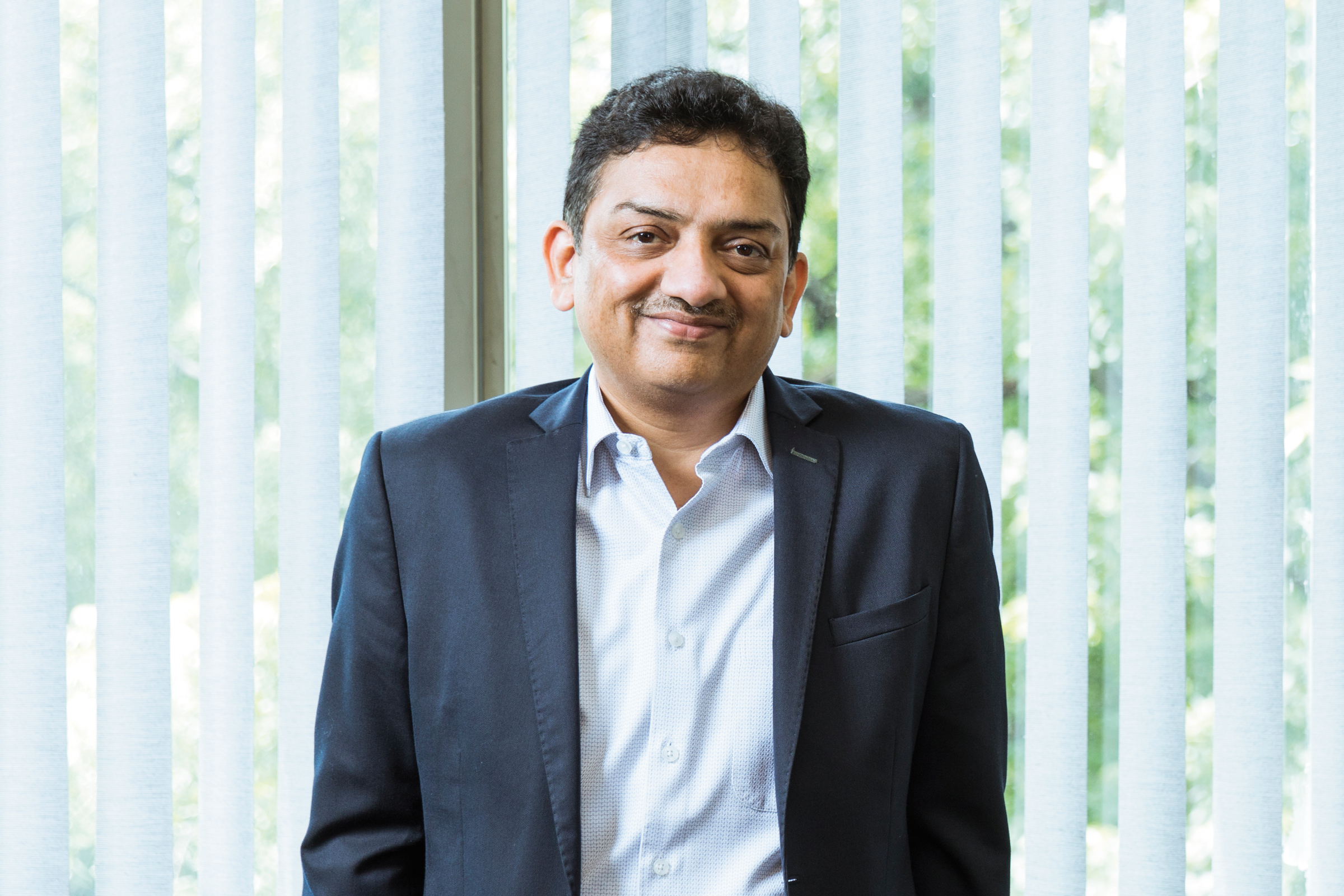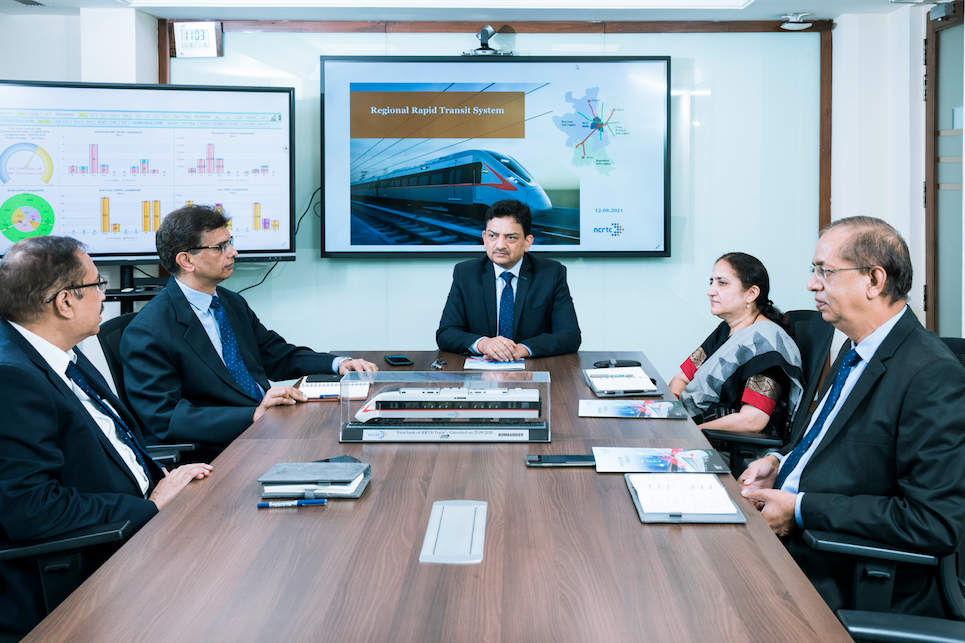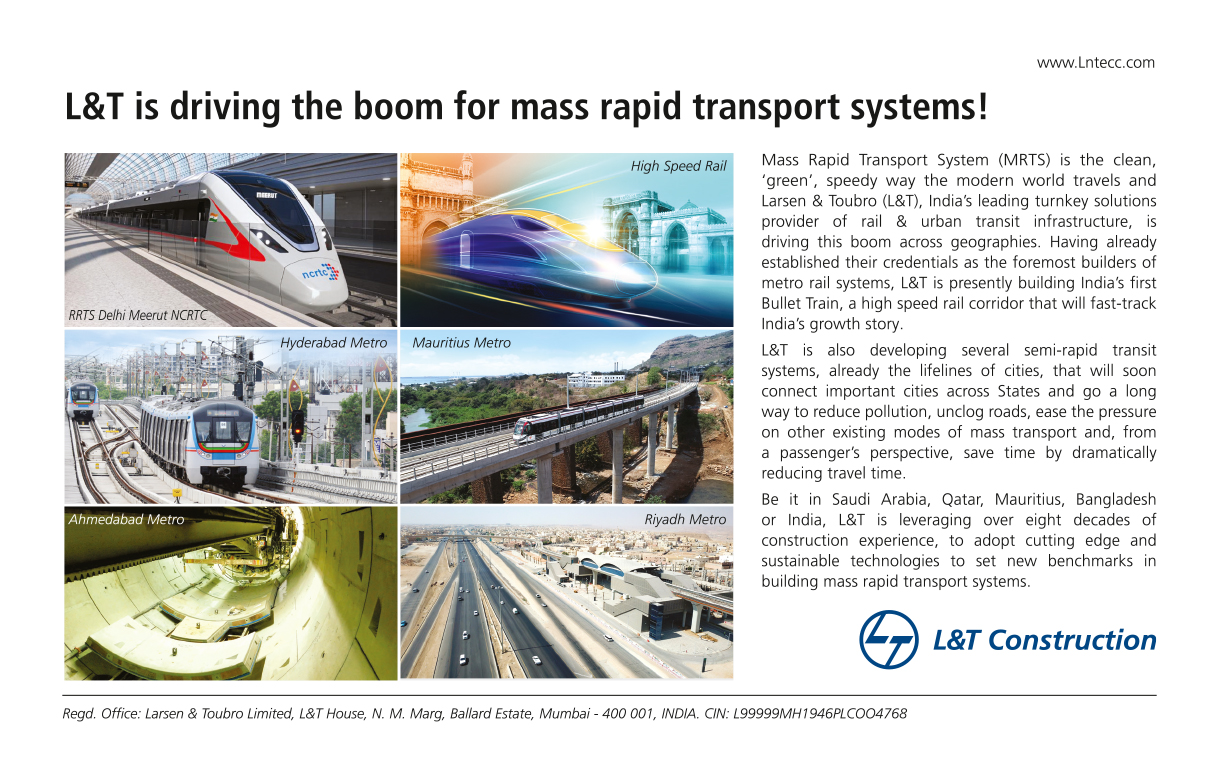Vinay Kumar Singh is changing the face of India’s public transport sector and, indeed, people’s lives. “Waking up every day and working towards this dream project is something I love,” he beams. The Managing Director of National Capital Region Transport Corporation (NCRTC) has every right to be proud – he and his team are connecting the country’s National Capital Region (NCR), after all.

“I believe the Regional Rapid Transit System [RRTS] will bring a shift in how people travel across the NCR, reducing the dependence on personal vehicles, thereby reducing congestion and pollution,” he explains.
“Once it is operational, the RRTS will provide seamless integration with other modes of public transport like the Indian Railways, metro, interstate bus terminals and the airport, easing people’s movement, providing a comfortable and safe travel experience, and saving people’s time.”
It’s a huge US$15 billion project with three corridors in Phase-1, the first of which is due for completion in 2025, and there are very few people who could run it – Vinay is certainly at the top of a small list.
A civil engineer, he started his career as a railway officer in 1988 and has gone on to become an infrastructure planning and implementation expert, with expertise in rail-based transport systems and a deep understanding of advanced technologies. One of the youngest technocrats in India, he has extensively studied high-speed rail projects and has been key in bringing high-speed rail technology to the country.
As the first Managing Director of NCRTC and the organisation’s first employee, Vinay’s primary job was to put a team together. “I had the responsibility of building a team of experts to start this prestigious project from ground zero,” he recalls.
We are building a first-of-its-kind green mobility solution for the people of NCR, and our teams are adopting world-class solutions and systems from across the world to ensure that we succeed in every aspect of this path-breaking project.
“Getting the right team on board was the first crucial task, followed by the selection and implementation of new-age technologies. My past work experiences held me in good stead to give the right shape and direction to the country’s first RRTS project. And from planning to execution, I partake in every discussion with our committed and passionate teams.”
Transformative technology
Despite the RRTS being a unique multi-state project, Vinay was so effective in driving it that construction began within two months of it being sanctioned. And there is no doubt as to the level of technology he is bringing to this transformational project.

“What we’re doing is the first of its kind. I believe this new-age transit system will prove to be one of the most sustainable urban mobility solutions the country has ever seen,” he explains. “The number of new construction technologies and techniques we are utilising will be transformational for the entire transportation sector in the country and pave the way for many more such projects in the years to come.”
ETCS Level-2 signalling technology from Europe is the “most advanced signalling and train control system in the world”, according to Vinay. RRTS will have state-of-the-art rolling stock designed for a speed of 180 kilometres per hour, which is being designed and manufactured in India. To make maintenance more efficient, NCRTC is adopting a real-time enterprise asset management system called iDREAMS.
“Through this system of asset management, NCRTC will transform the way rail assets are being managed in India,” he predicts. “We are also adopting an automatic fare collection system based on open-look (NCMC), which will offer QR code-based ticketing as well as Rupay, Mastercard and Visa contactless card payments.”
Not only is the technology planned for the rail system impressive, but the systems used in building it are equally cutting edge too. “NCRTC is using a continuously operating reference station based on global navigation satellite system technology to ensure accurate alignment of civil structures,” Vinay says.
“We’re also using common data environment, which is an electronic platform to keep all documents and communication related to the project in one place. It facilitates seamless coordination with project designers, contractors, suppliers and stakeholders.”
Building information modelling is also being used – a virtual reality-based technology that provides a highly detailed and accurate digital representation of the project. This mitigates errors during construction, saving time and money.
“Traditionally, infrastructural designs are largely reliant upon two-dimensional technical designs that prolong construction time,” Vinay says. “BIM enables NCRTC to shorten construction times, resulting in a reduced construction cost.”
All on track
As such, the 82-kilometre Delhi-Ghaziabad-Meerut corridor is on course to be delivered on schedule. And that’s despite a number of challenges, not the least of which was the COVID-19 pandemic.
“Working on such a complex and large-scale project can be a little tricky to begin with, especially when the processes and solutions required are being used for the first time in the country,” Vinay admits.
“The pandemic posed huge staffing challenges for all infrastructure projects, but our teams supported each other during these tough times to keep everyone safe and made use of our best-in-class technological solutions to ensure the project remained on schedule.”
Vinay is known within NCRTC and throughout the industry for his focus on detailed planning and preparatory work. He also has a pragmatic approach and strong implementation skills, based on making complex problems simple for his team to understand and implement.
“I believe in empowering people to take ownership for their work, and guiding them when required,” he asserts. “For the success of such a large and complex project, it is vital that the entire workforce has belief in our common goals and objectives. I feel proud to be spearheading an organisation that has people who are among the best in their respective fields and are supremely passionate about implementing India’s first RRTS corridor.”
Vinay is also ensuring that NCRTC partners with civil construction, signalling, electrical, track and rail manufacturing companies that are experts in their respective domains, including L&T, Afcons, Alstom, KEC, APCO, Ircon and consulting companies including SYSTRA, AECOM, Ayesa, Italferr, EY and BCG among others. Vinay believes the RRTS has already created a buzz among stakeholders and future customers alike.
“We are building a first-of-its-kind green mobility solution for the people of NCR, and our teams are adopting world-class solutions and systems from across the world to ensure that we succeed in every aspect of this path-breaking project,” he says.
“This project will prove to be a game-changer as far as urban mobility in the country is concerned and transform the way people would prefer to travel.” It’s a massive transformational infrastructure project, but with the motto of ‘progress through speed’, expect it to arrive as quickly and efficiently as the RRTS trains that will eventually drive the progress through their speed.
Proudly supported by:



